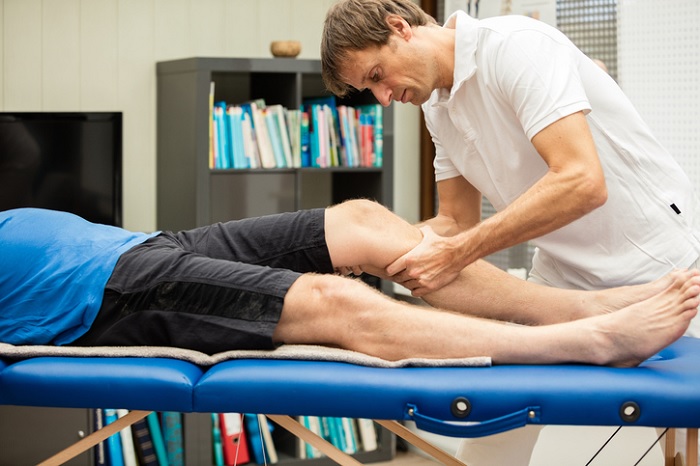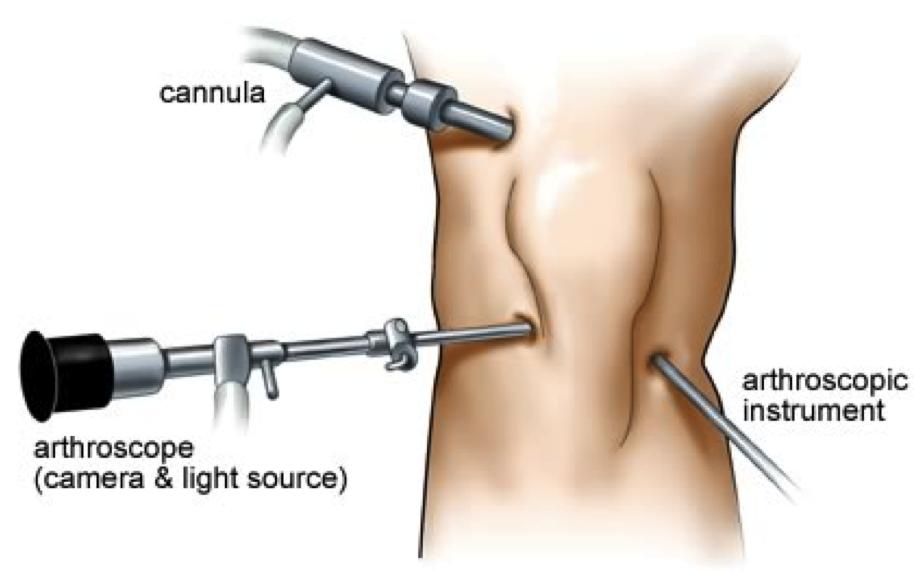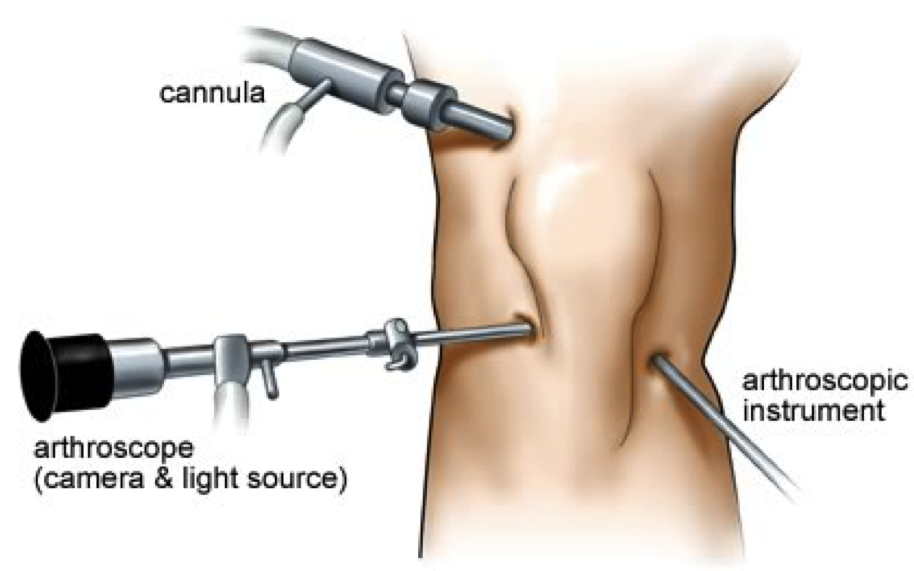What is knee arthroscopy?
Arthroscopy in Delhi is a surgical technique that allows you to directly see the inside of the knee joint and work inside it, without having to open it. Only two small incisions or cuts are made in the skin, about one centimetre each (which is why it is called a mini-invasive technique).
Arthroscopy in Delhi is considered the best current technique for meniscal injuries, adhesions, plica, loose bodies, cartilage injuries (chondroplasty) and reconstruction of cruciate ligaments, explains the orthopaedic in Delhi.
How is knee arthroscopy done?
The orthopaedic surgeon in Delhi, in order to see the inside of the joint well and avoid tissue injury with his manoeuvres, fills it with sterile pressure serum, which has the effect of inflating a balloon; and at the same time, it allows continuous joint washing, eliminating blood residues, excised tissue fragments, etc.
The patient lies on his back on the operating table. No system is necessary to pull the joint. You only need to lock the position of the thigh and the surgeon or assistant mobilizes the leg, opening the joint space.
Through an incision, a micro camera is introduced that illuminates and amplifies the interior of the joint, viewing the image on a television monitor. On the other hand, work instruments are introduced, such as probes, hand grippers and motorized smoothing devices.
The anaesthesia used is spinal anaesthesia (patient conscious but asleep from the waist down). Some sedation may be associated with this procedure to be calmer during the surgical act. General anaesthesia is reserved for special cases.
A tourniquet is used on the thigh to prevent bleeding from the knee during the operation, thus promoting vision through the camera.
Although it is a surgical act and requires the same aseptic conditions (cleanliness and sterility to avoid infection) as any other operation, the hospital stay is usually very short. In most cases, the patient can be discharged on the same day, when the anaesthetic effect has worn off. These operations can therefore be included in the program of major outpatient surgery, explains the orthopaedic surgeon in Delhi.
What does knee arthroscopy in Delhi show?
- The appearance of synovialfluid (viscous fluid that lubricates the joint), which may be cloudy, contain blood or loose bodies, usually cartilage. Synovial fluid can be analysed to determine its composition in special cases.
• The synovial membrane(the sac that lines the joint inside and produces synovial fluid). In certain cases, a sample (biopsy) is taken for analysis under a microscope.
• The cartilage that lines the articular surfaces of the femur, tibia, and patella. It is palpated with a special hook to see the consistency and it is observed if it has injuries: wear (osteoarthritis), fissures, chondromalacia …
• The menisci (internal and external): observed and palpated with the probe hook. Breaks, tearing, wear are detected … - The cruciate ligaments(anterior and posterior): they are seen and touched to determine partial or total tears, laxity, function … The collateral ligaments are not seen with this technique.
• The way the patellamoves when the knee is bent and stretched, as well as the friction surfaces.
In which cases should an arthroscopy in Dwarka be performed?
Less and less to diagnose, as advances in ultrasound, CT (scanner) and nuclear magnetic resonance resolve it more and more frequently, although they are not infallible.
However, in cases of doubt or when a major intervention on the knee is planned, an arthroscopy can be performed beforehand, which will make it possible to confirm the diagnosis, rule out other injuries and decide the best possible treatment, which is also sometimes arthroscopic. Thus, in the same surgical act it is diagnosed and treated. In addition, there are patients who have contraindicated MRI (due to claustrophobia, or prosthetic heart valves), in those cases, diagnostic and therapeutic arthroscopy would be indicated by the orthopaedic doctor in Delhi.
Another diagnostic utility is to allow a synovial biopsy in certain diseases.
Currently, the main indications for performing a knee arthroscopy in Dwarka are:
- Meniscal injuries: remove broken fragments, suture certain tears, regeneration techniques and meniscal reimplantation
- cruciate ligament reconstruction: avoid opening the knee as before
- cartilage injuries: cleaning, regenerative techniques (platelet growth factors, mosaicplasty)
- removal of intra-articular loose bodies: fragments of detached cartilage or meniscus
- removal of synovial plica or synovitis (synovial membrane hypergrowth)
- cleaning on knees with osteoarthritis (wear) before reaching the total knee replacement
Recommendations at hospital discharge:
They are usually quite simple since it is a mini-invasive technique.
A compression bandage is placed, which the patient will remove at home after 48 hours. Then the first treatment is carried out, which consists of painting the two small wounds with Betadine and covering them with two adhesive dressings.
From there, the treatment will be repeated every day until the stitches fall out (about 2 to 4 weeks). It can be made to coincide with the shower as long as two rules are met:
- quick shower: the less time the wounds are wet the better
- WITH the dressings on: so that soap, shampoo, dirty water do not get into the wounds
After showering, the wet dressings are removed, the wounds are thoroughly dried with sterile gauze, painted with Betadine, and new dressings are placed.
From the moment the mobility of the legs recovers after anaesthesia, it is advisable to start walking. At first helped with crutches and following the indications of your orthopaedic surgeon in Dwarka regarding load (partial or complete). Usually, the patient leaves the hospital the same day walking with the help of two crutches.
An anti-inflammatory treatment is usually recommended at discharge for the first days.
It is advisable to apply ice locally for 10-15 minutes about 3-4 times a day to help reduce inflammation.
Depending on the diagnosis and treatment carried out, a specific physiotherapy may or may not be prescribed, with the recovery times greatly varying. The time in which you can return to sports or hard work depends on the injury: from 1 month to several months.
In the event of residual effusion (usually due to the persistence of the arthroscopic lavage fluid and more rarely due to bleeding into the joint, which is the hemarthros), an evacuating puncture may be necessary: the area is punctured, and the excess fluid is extracted with a syringe. This procedure should only be performed by an orthopaedic surgeon in Delhi.







